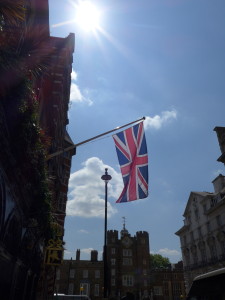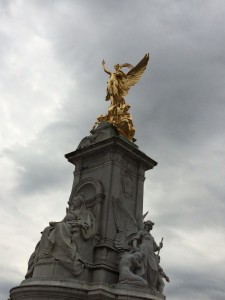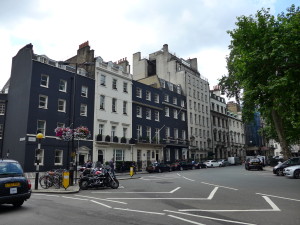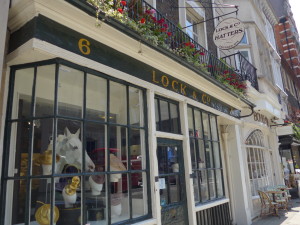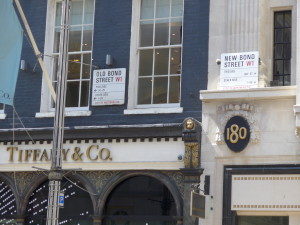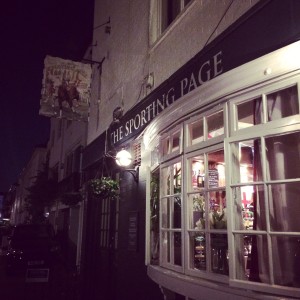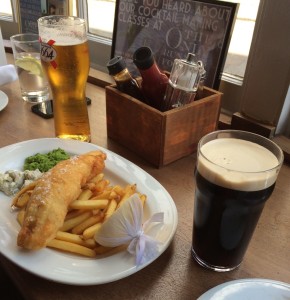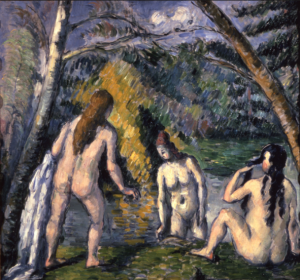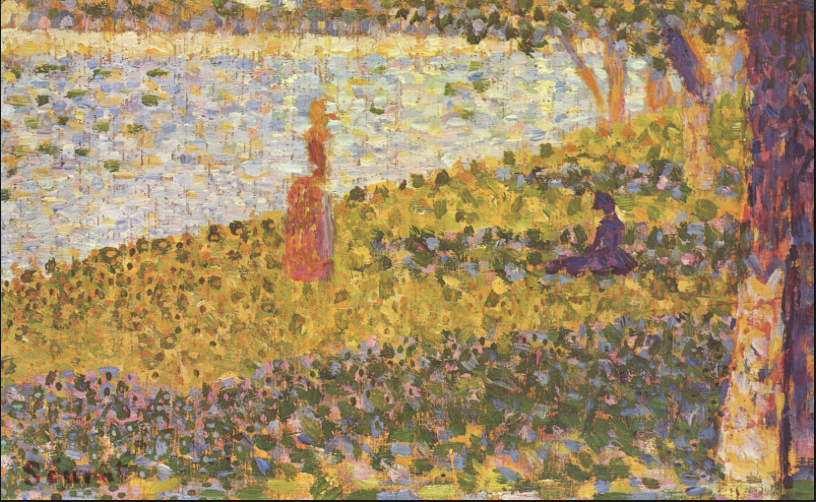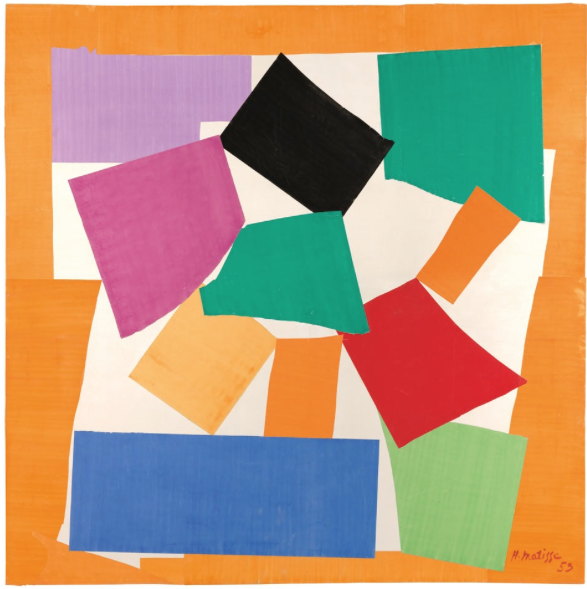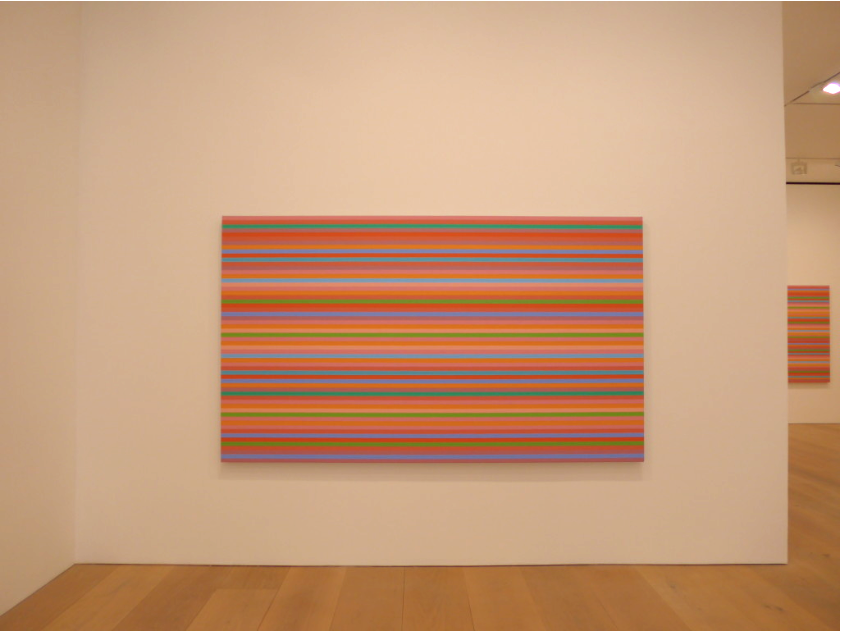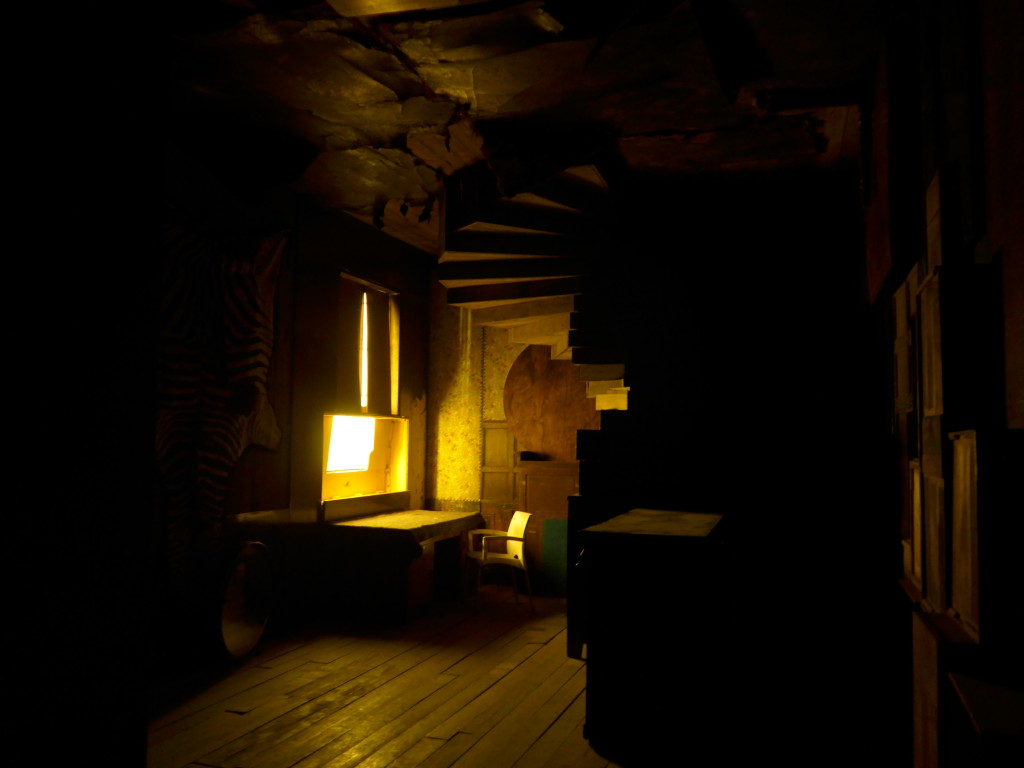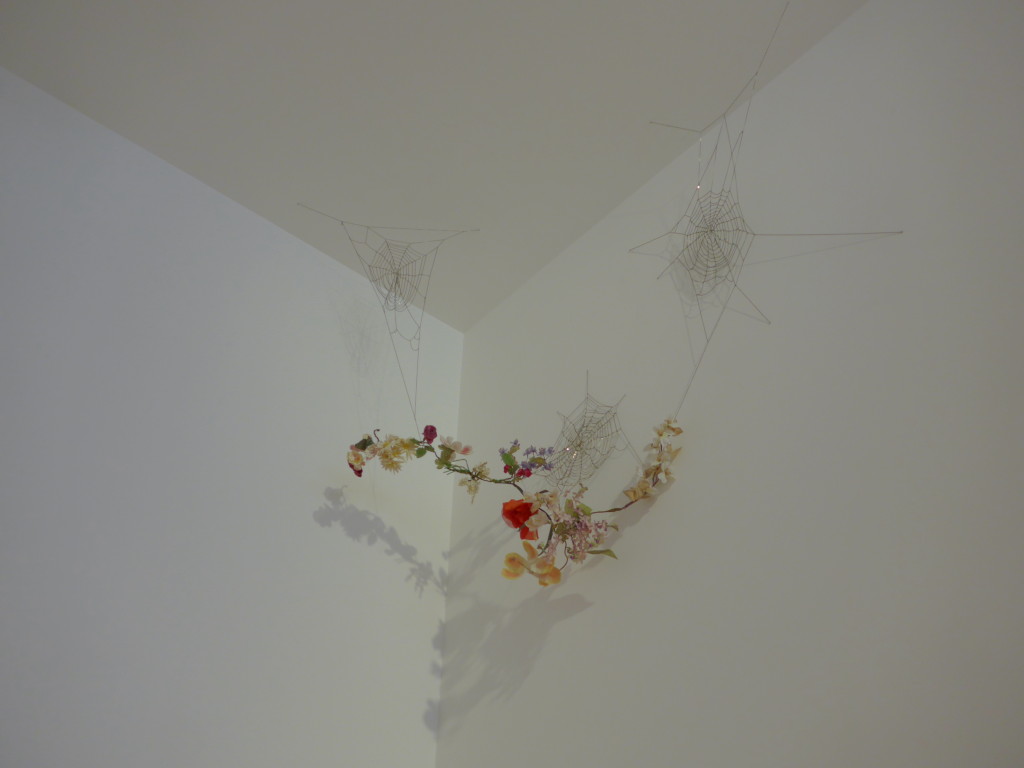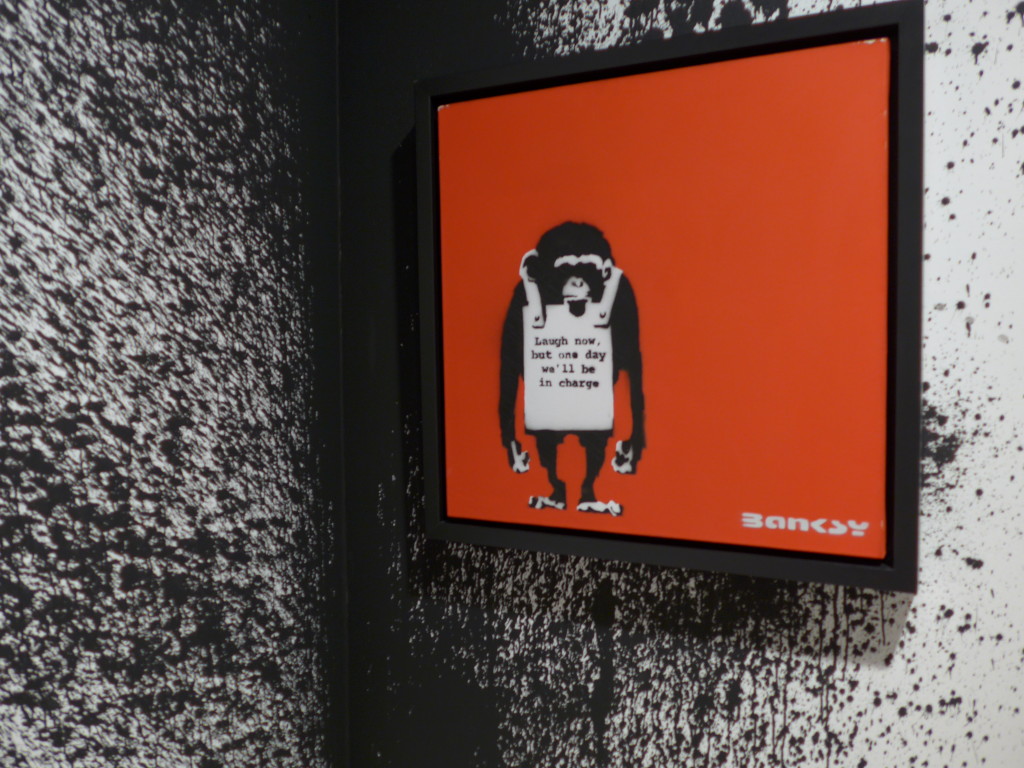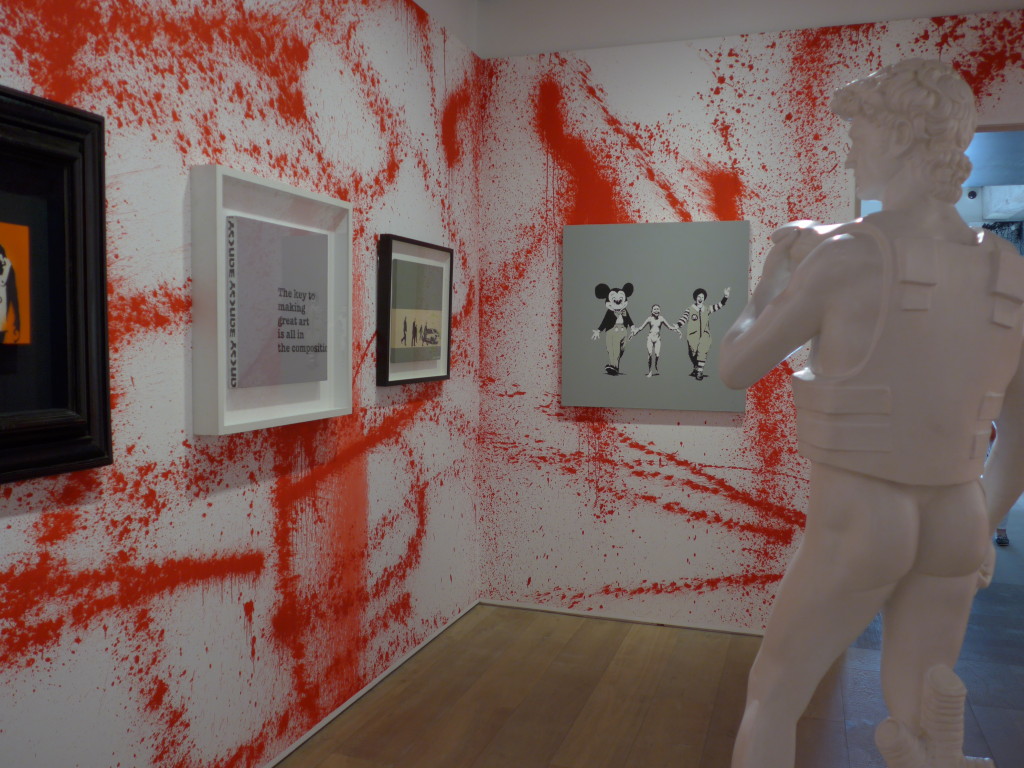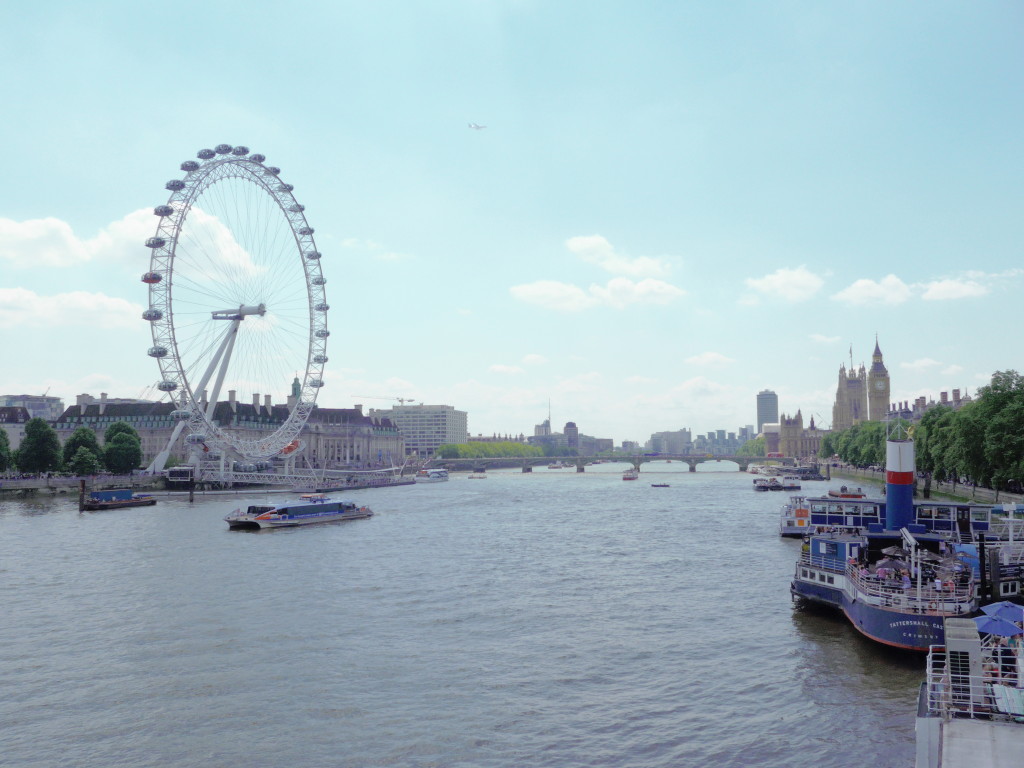 I jumped the pond for a few days and tackled as many exhibitions as my jet-lagged brain would allow. There’s really much too much to see in London in three days but I gave it a valiant effort. The highlight of my trip was Bridget Riley The Stripe Paintings 1961-2014 at David Zwirner, the Henri Matisse Cut Out exhibition at the Tate Modern, Adrian Ghenie’s Darwin Room at Pace London, early Jim Hodges at Stephen Friedman, and BANKSY at Sotheby’s. And I thoroughly enjoyed wandering around the lovely little Mayfair shops and pubs and enjoying all of the old-world charm London has to offer. Including a few pints of Guinness.
I jumped the pond for a few days and tackled as many exhibitions as my jet-lagged brain would allow. There’s really much too much to see in London in three days but I gave it a valiant effort. The highlight of my trip was Bridget Riley The Stripe Paintings 1961-2014 at David Zwirner, the Henri Matisse Cut Out exhibition at the Tate Modern, Adrian Ghenie’s Darwin Room at Pace London, early Jim Hodges at Stephen Friedman, and BANKSY at Sotheby’s. And I thoroughly enjoyed wandering around the lovely little Mayfair shops and pubs and enjoying all of the old-world charm London has to offer. Including a few pints of Guinness.
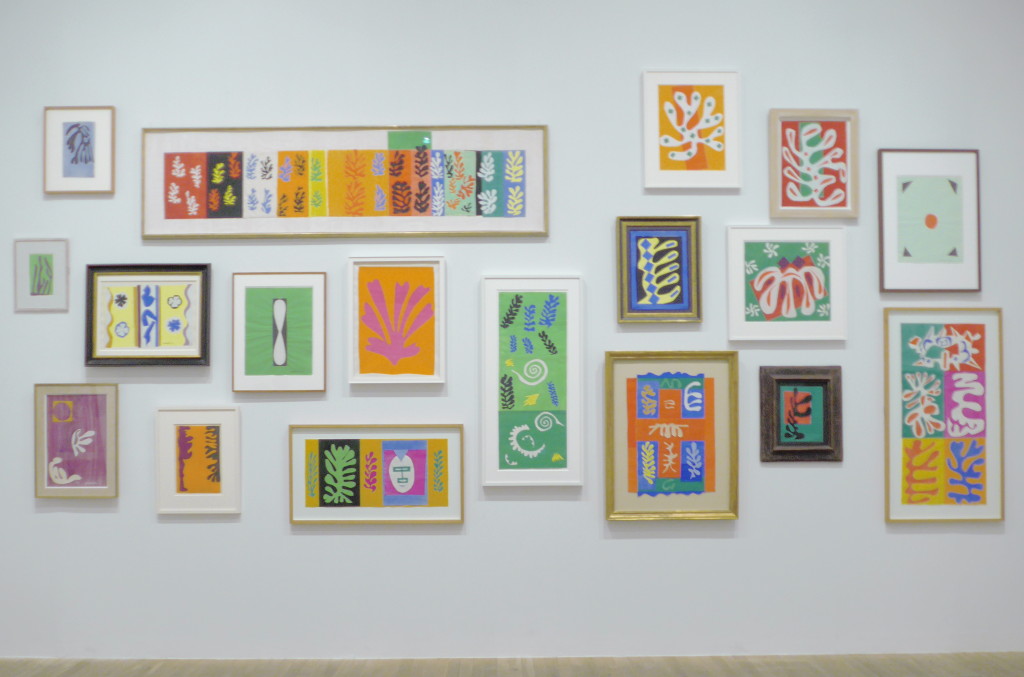 Henri Matisse: Cut Outs at the Tate Modern is really a must-see if you’re in London. No excuses. These are fabulous works the artist made from brightly colored cut paper in the later years of his life. Beginning in the late-1940s, when confined mostly to his bed or chair due to declining health, Matisse replaced his pen and paintbrush with a pair of scissors. Being the true colorist he was, he pasted organic shapes atop geometric backgrounds as an exercise in studying how the varying forms and colors would play off one another.
Henri Matisse: Cut Outs at the Tate Modern is really a must-see if you’re in London. No excuses. These are fabulous works the artist made from brightly colored cut paper in the later years of his life. Beginning in the late-1940s, when confined mostly to his bed or chair due to declining health, Matisse replaced his pen and paintbrush with a pair of scissors. Being the true colorist he was, he pasted organic shapes atop geometric backgrounds as an exercise in studying how the varying forms and colors would play off one another.
Bridget Riley (b. 1931 London) is an abstract painter known for fooling our eyes into seeing movement on her colorfully patterned canvases. Her completely abstract images, though, are greatly influenced by masters of pointillism, George Seurat; impressionism, Paul Cézanne; and modernism, Henri Matisse. She spoke of these specific influences, particularly Matisse, during her talk given at the Tate Modern. Taking her stripe paintings, on view at David Zwirner, her work can be viewed as the final step in the deconstruction of a landscape – beginning with Seurat and Cézanne, aided by Matisse’s pictorial abstraction, and completed when she uncoils any remaining semblance of figure or form and synthesized the field into a thin elemental line. She paraphrased the late critic, David Sylvester, who said that her abstraction is a way out of Matisse, but would not have been possible if it weren’t for Matisse.
In the talk, Riley used Cézanne’s Three Bathers, 1879-82, landscapes by Seurat, and Matisse’s The Snail, 1953, as visuals and it all made perfect sense. Watch the progression:
Back in the charming neighborhood of Mayfair, in between the shops and sites, three gallery exhibitions caught my attention:
Adrian Ghenie’s Darwin Room at Pace London is a fantastic life-size space designed to resemble Rembrandt’s Philosopher in Meditation, 1632. More than that, Ghenie is representing the trope of how an intellectual space, a fabled room of enlightenment, was portrayed in Western art. As with Rembrandt’s painting, this canonized scene often involves the lone saint, martyr, or philosopher in a dark austere room, illuminated by a single source of light: the Light of Reason. The effect, aided by the dramatic use of chiaroscuro, is to demonstrate the significance of one man’s conviction and how their actions changed the course of history. Ghenie’s carefully orchestrated Darwin Room follows Rembrandt’s model but appropriates it to Charles Darwin. Though the diorama itself is ambiguous we can associate this light as the beginning of Darwin’s The Origin of Species and the turning point in science that had profound consequences.
At Stephen Friedman gallery I saw these incredible delicate early works by Jim Hodges, an artist known mostly now for his mirrored glass mosaic pieces resembling large flat disco balls. But Hodges employs a diverse range of materials in his arsenal, which include gold leaf, thin brass chains, and silk flowers. The works on view on Old Burlington Street, like A Model of Delicacy, 1992, are fragile, diaphanous, yet tucked into the gallery’s corners as if they’ll live there forever.
I’m not sure if this was BANKSY‘s intention, but many of his works have landed themselves in a selling exhibition at Sotheby’s London. Given his schtick as the Batman of the urban graffiti world – true identity unknown, only comes out at night, that kind of thing – it seems strange that his prints and paintings have now been framed and placed on display in one of the highest of highbrow auction houses. Nevertheless, I had to see it. And I gotta say, it was really cool. OK, maybe the spray-painted walls were a bit contrived, but his works had the same sardonic heft as his large outdoor graffiti images. I particularly loved the little monkeys bearing signs like “Laugh now, but one day we’ll be in charge.” BANKSY definitely appeals to a broader less art-y (but very hip) crowd, which is exactly why collectors will no doubt gobble these up…gotta stay one step ahead of the cool kids.
I’ll jump back across the pond again in July, when I’ll hopefully have the chance to see the new Serpentine pavilion and check out more of London’s gallery scene. Until then, happy summer!
